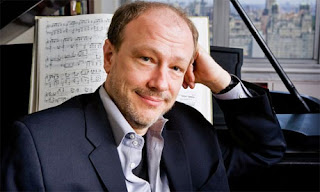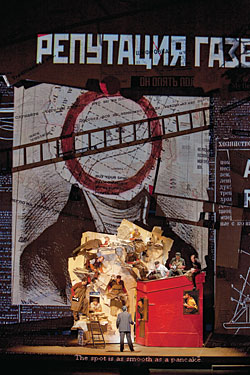Longwood Symphony Orchestra
August 18, 2010
DCR Hatch Memorial Shell
Boston's Esplanade 7:00pm
In the Mood
As everyone knows that Boston is the home to major academic institutions, i.e. Harvard, MIT, Boston University, Boston College, Wellesley College, Tufts and many others. Likewise it is hotbed of excellence in Medicine and Biotechnology including notables such as Mass General Hospital (MGH), Brigham and Women's, Beth Israel, Deaconness, Dana Farber and companies including Amgen, Pfizer, Novartis, AstraZeneca, Genzyme, Vertex and countless others. Similarly, it is the seat of world class science, e.g. Whitehead Institute and The Broad, Howard Hughes, etc. It is therefore not surprising that many of these professionals have banded together to create great music.
Last night the orchestra played at the Hatch Shell, made famous by Arthur Fiedler and the Boston Pops. It is an impressive venue for free concerts and movies and is packed to several hundred thousand on annual July 4th celebrations. There are tributory stues of Arthur Fiedler, a Paul Dudley White, MD (notable cardiologist), Harry Ellis Dickson (late director of the Pops and father-in-law to ex-governor Michael Dukakis. The venue is beautiful and the weather was simply gorgeous. We had difficulty finding a parking spot on Storrow Drive which is available

for each concert, so we ended up parking on Charles Street in Beacon Hill and attending the 2nd half of the concert. It was a charming Beethoven's 4th symphony. It was led by Jonathan McPhee its conductor. What they lack in talent is more than amply made up for by enthusiasm. I am not a fan of amplified music which tends to be distorted and leaves the listener straining to hear the quiet passages. The venue was terrific and the audience received the performance with great applause. The theme of the program was "In the Mood" The evening ended with a rousing performance of "In the Mood" made famously popular by Glenn Miller in 1939 in the Big Band Era.
The orchestra is a Who's Who of medicine, science and academia and should be applauded for bringing great music to the public. They also play at many local shelters, nursing homes and traditional venues. Rather than bore the reader with full biography's, I thought that I would list the players who rightly deserve recognotion for their medical, humanitarian and musical contributions.
Violins
Sherman Jia, Concertmaster
3rd year, HMS, Howard Hughes Research Fellow
Hana Asazuma-Cheng
Music teacher (violin, viola, chamber music)
Catherine Brewster
English Teacher, Commonwealth School
Terry Buchmiller, M.D.
Pediatric Surgery, CHB, Co-Director Advanced Fetal Care Center, CHB
Jennifer Chang, Ph.D.
M.D. - Ph.D. student, HMS
David Chen, M.D.
Internal Medicine, Faulkner Hospital
Jennifer Chu
Freelance science writer
Mark Emerson, Ph.D.
Postdoctoral Fellow, Genetics, HMS
Sumi Fasolo, AIA
Architect, Cambridge Seven Associates
Tamara Goldstein, O.T.
Hebrew Rehabilitation Center
Anand Jagannath, M.S.
Research Technician, Cardiac Surgery, MGH
Elizabeth Henderson
Freelance Technical Editor
Heidi Harbison Kimberly, M.D.
Emergency Medicine, BWH
Anna Legedza, Sc.D.
Principal Biostatistician, Biometrics, Vertex Pharmaceuticals Inc.
Shenkiat Lim
Director of Product Development, Fidelity Investments
Justin Lo
2nd year, HMS
Psyche Loui, Ph.D.
Research Instructor, Neurology, BIDMC, HMS
Spencer McClelland
2nd year, HMS
David Mish
ESL/History Teacher, Cambridge Public Schools
Ramona Nee, J.D.
Weil, Gotshal & Manges LLP
Susan Pauker, M.D.
Associate Professor, HMS; Genetics Chief, Harvard Vanguard Medical Associates; MGH. BWH, Lahey
Chris Richards, Ph.D.
Dept. of Biology doctoral program, Harvard University
Helle Sachse, J.D., Ph.D.
Asst. D.A., Suffolk County
Jenny Smythe, Ph.D.
Physicist, Schlumberger Limited
Ellen Tulchinsky, M.S.P.T.
Physical Therapist, BWH/MGH
Elisha Wachman, M.D.
Pediatrics, Emerson Hospital, BWH
Lisa Wong, M.D.
Milton Pediatrics Associates, HMS, CHB, MGH, BWH, BIDMC
Violas
Michael Cho, M.D.
Research Fellow, Pulmonary and Critical Care Medicine, BIDMC, BWH, MGH
Sarah Cohen
Engineer, Rhythmia Medical
Jon Epstein
Software Engineer, Microsoft
Jennifer Grucza
Senior Software Engineer, Unica
Alistair Kok, D.D.S.
Dentist, Gentle Dental Cambridge
Elizabeth Ogburn
2nd year Ph.D. student, Harvard University
Jane Perera
Speech Therapist, Cotting School
Andrea Spencer, M.D.
MGH/McLean Resident in Psychiatry
Peter Stein, D.C.
Chiropractor, Harvard Vanguard Medical Associates, BU Sargent College
Nicholas Tawa, Jr. , M.D., Ph.D.
Surgical Oncology, BIDMC, HMS
Gwendoline Thornblade, B.D.Sc, M.Sc.D.
Retired Pedodontist
Leah Wilson-Velasco
Director of Operations, Boston Youth Symphony Orchestra
Cellos
Joseph Rovine, D.M.A., principal
Senior Software Engineer, Microsoft
Sylvain Casimir, R.Ph.
Pharmacist
Nancy Chane, R.N., M.S.
Palliative Care Nurse, Tufts Health Plan
Gregory Crist
Interactive Media Designer, iFactory
Mark Cusac
Engineer, CDM
Heidi Greulich, Ph.D.
DFCI, Broad Institute, BWH, HMS
Katherine Hein, M.D.
Plastic Surgeon, MetroWest Medical Center, Newton-Wellesley Hospital
Tai Katzenstein, Ph.D.
Psychology, MGH
Denise Lotufo, P.T., D.P.T., O.C.S.
Harvard, UHS
Martha MacMillin
Cello instructor
Read Pukkila-Worley, M.D.
Infectious Diseases, MGH, HMS
Christopher Reuning
President, Reuning & Son Violins
Susan Z. Robins
President, Muscle Angels, a norbis Innovations Company, LLC
Andreas Schild, Ph.D.
Research Fellow, Center for Human Genetic Research, MGH
Basses
Martha Davis, J.D., principal
Professor, Northeastern University School of Law
Jack Dennerlein, Ph.D.
Associate Professor, Environmental Health, HSPH
Karyn Wang
Flutes
Tobi-Ann Kocher
Flute Instructor
Daniela Krause, M.D., Ph.D.
Clinical Pathology and The Center for Regenerative Medicine at MGH
Cindy Moore
Music, Framingham Public Schools
Oboe
Michael Barnett
4th year, HMS
Hilary Cipullo
William Kates, M.D.
Psychiatry, BIDMC, HMS
Thomas Sheldon, M.D.
Assistant Professor Dartmouth Medical School; Director, Radiation Oncology Concord Hospital
Clarinet
Jeffrey Berman, M.D.
Pulmonary and Critical Care, BMC, BUSM
Mark C. Gebhardt, M.D., Ph.D.
Prof. of Orthopaedic Surgery, HMS, Orthopaedic Surgeon-in-Chief, BIDMC, CH Orthopedic Surgery
Tammy Avery Gibson
Cephalon Pharmaceuticals
Paul Silver
President, Handyman Heroes
Bassoon
Stephen Wright, M.D.
Chief of Medicine, Faulkner, BWH, TUSM, HMS
French Horn
Vanessa Gardner
Concerts Manager, MIT
John Hecker, AIA
Carr Lynch and Sandell, Architects
Trumpets
Leonard Zon, M.D.
Heme/Onc CHB, DFCI, HMS
Wolfram Goessling, M.D., Ph.D.
Genetics and Gastroenterology, BWH; Heme/Onc, DFCI; HST; HMS
Trombone
Peter Cook
Computer Engineer
Paul Salinas
Shire Human Genetic Therapies
Timpani
Jeremy Lang
Operations Manager, Elysium Digital LLC
Percussion
Tom Sandora, M.D.
Pediatric Infectious Disease, CHB, HMS



 Last night Paula & I attended the Concert for the Cure entitled "Rhythms of Hope" at Jordan Hall. This concert sponsored by the Susan G. Komen for the Cure Massachusetts was spurred on by Julie Scolnik, a breast cancer survivor and flautist with the Boston Symphony Orchestra. As Julie explained, it was music that enabled her to get through surgery, chemotherapy and radiation. On the eve of her final radiation therapy 5 years ago, she played in a concert that included Franck's violin Sonata. This initial performance has evolved into a fabulous fundraising event.
Last night Paula & I attended the Concert for the Cure entitled "Rhythms of Hope" at Jordan Hall. This concert sponsored by the Susan G. Komen for the Cure Massachusetts was spurred on by Julie Scolnik, a breast cancer survivor and flautist with the Boston Symphony Orchestra. As Julie explained, it was music that enabled her to get through surgery, chemotherapy and radiation. On the eve of her final radiation therapy 5 years ago, she played in a concert that included Franck's violin Sonata. This initial performance has evolved into a fabulous fundraising event. 





























 BACKSTORY
BACKSTORY



